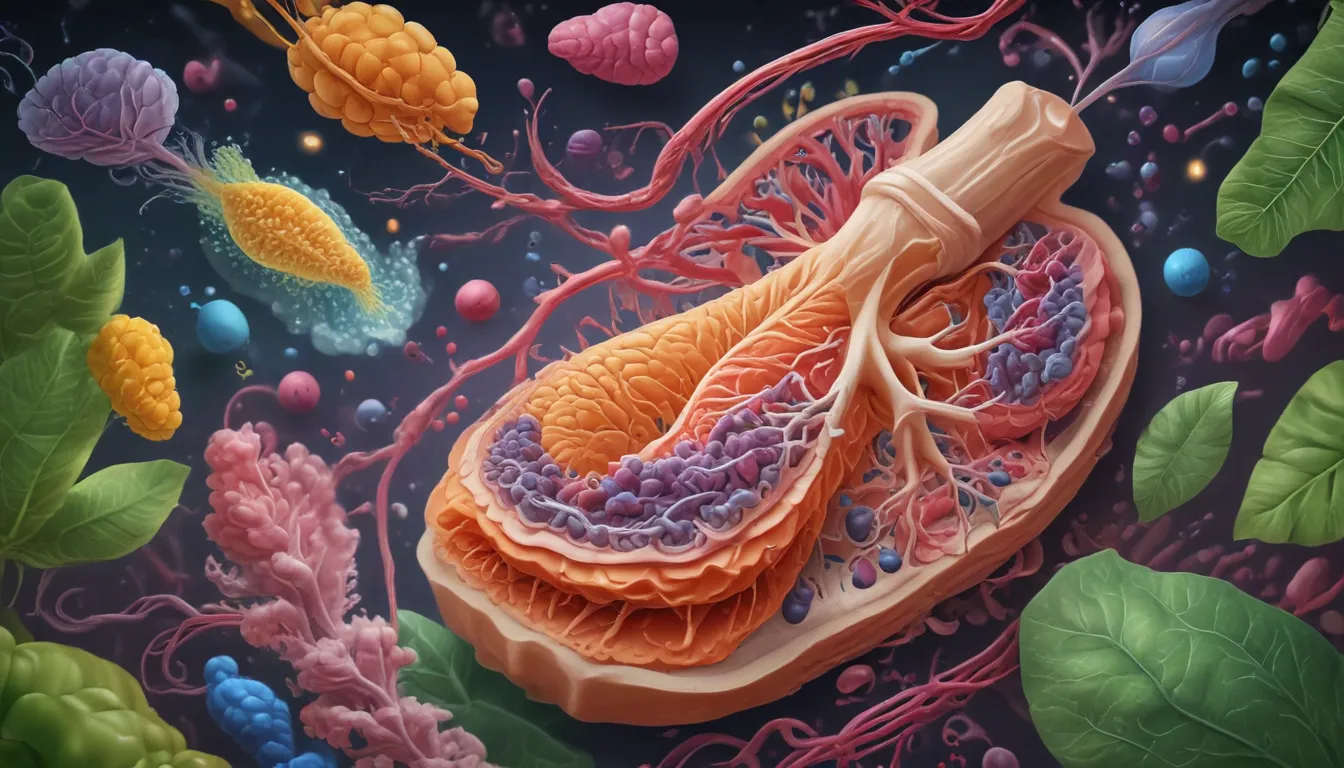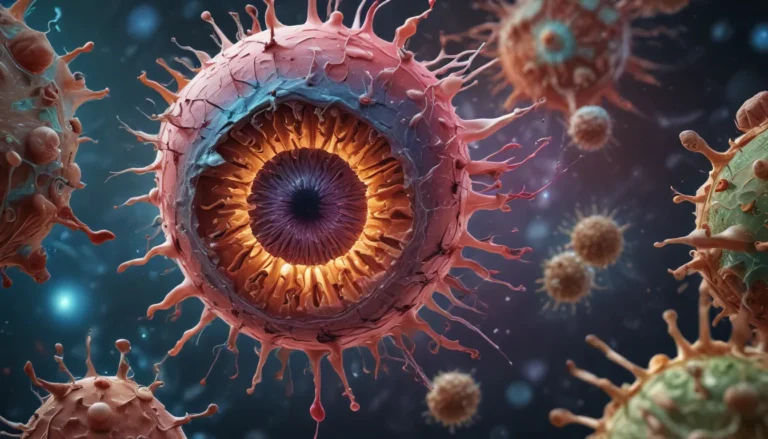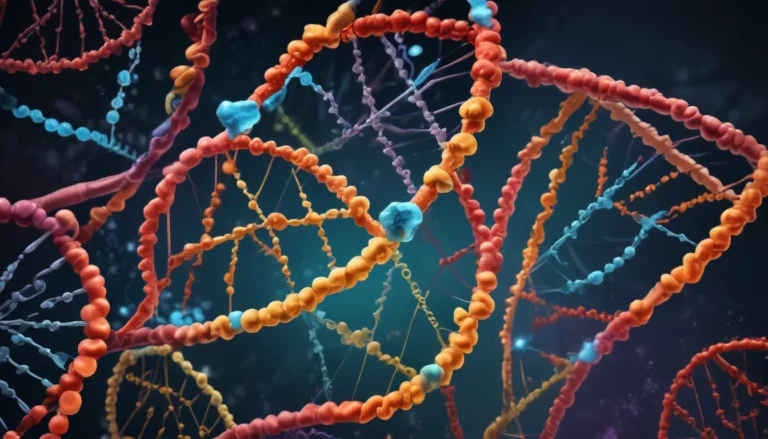A Note About Images: The images used in our articles are for illustration purposes only and may not exactly match the content. They are meant to engage readers, but the text should be relied upon for accurate information.
Welcome to the captivating world of cellular respiration, where the intricate mechanisms that sustain life come to light. From the energy production in mitochondria to the various stages involved, cellular respiration is a fundamental process that powers every living organism, big or small. In this article, we will uncover 15 intriguing facts about cellular respiration that will enhance your understanding and spark your curiosity about this vital biological function.
Key Takeaways:
- Cellular respiration is the process that gives cells the energy they need to function, occurring in plants and animals alike, supporting their survival and growth.
- Mitochondria, the powerhouses of the cell, play a crucial role in energy production through glycolysis, the Krebs cycle, and oxidative phosphorylation.
Exploring the Basics of Cellular Respiration
Cells rely on a constant supply of energy to carry out their functions, and cellular respiration is the key to providing this fuel. This essential process involves converting glucose into usable energy, allowing cells to thrive and fulfill their biological roles efficiently.
Understanding the World of Cellular Respiration
Cellular respiration is not limited to a specific type of organism; it is a universal process that occurs in both plants and animals. While plants primarily undergo respiration during the day, animals continuously engage in this vital function to support their metabolic activities.
The Three Main Stages of Cellular Respiration
Within the realm of cellular respiration, there are three main stages that cells undergo to generate ATP, the energy currency of the cell: glycolysis, the Krebs cycle, and oxidative phosphorylation. These sequential steps contribute to the production of the majority of ATP necessary for cellular functions.
The Vital Role of Mitochondria in Energy Production
Mitochondria are hailed as the powerhouses of the cell, housing enzymes crucial for the different stages of respiration. Through their intricate processes, mitochondria contribute significantly to ATP generation, fueling cellular activities and sustaining life.
The Importance of Oxygen in Cellular Respiration
Oxygen plays a pivotal role in the efficiency of cellular respiration, serving as the final electron acceptor in the electron transport chain. This interaction leads to the production of ATP, essential for the vitality and functionality of cells.
Waste Products of Cellular Respiration
As cells carry out cellular respiration, they produce waste products in the form of carbon dioxide and water. These byproducts are expelled from the cells through exhalation, contributing to environmental gas balance.
Connecting Aerobic Respiration with Cellular Function
Cellular respiration is classified as an aerobic process, requiring oxygen to proceed effectively. In contrast, anaerobic respiration can occur without oxygen, typically yielding lactic acid or alcohol as waste products.
Unveiling the Energy Currency of the Cell
ATP, or adenosine triphosphate, plays an integral role as the energy currency of the cell. During cellular respiration, glucose is broken down to release energy, which is then stored and transported in the form of ATP to fuel cellular activities.
Influencing Factors of Cellular Respiration
Several factors can influence the rate of cellular respiration, including temperature and nutrient availability. Higher temperatures generally enhance the rate of respiration, while nutrient deficiencies can hinder energy production.
Exploring the Diversity of Organisms in Cellular Respiration Efficiency
Different organisms exhibit varying levels of efficiency in cellular respiration, reflecting adaptations to their unique biological requirements. For instance, birds possess highly efficient respiratory systems to sustain prolonged flights.
Uncovering the History of Cellular Respiration
The concept of cellular respiration traces back to the late 18th century when French chemist Antoine Lavoisier conducted groundbreaking experiments that laid the foundation for understanding the role of oxygen in respiration.
The Contribution of Cellular Respiration to Life Processes
Cellular respiration is essential for the energy required for cell division and growth. Without this pivotal process, cells would be unable to reproduce, and organisms would struggle to grow and thrive.
Embracing the Cyclical Nature of Cellular Respiration and the Carbon Cycle
Through releasing CO2 into the atmosphere, cellular respiration contributes to the carbon cycle. Plants subsequently utilize this CO2 during photosynthesis, establishing a continuous exchange of carbon in the environment.
Cellular Respiration: A Vital Process for All Living Organisms
From single-celled organisms to complex multicellular structures, cellular respiration is the cornerstone of life, ensuring the survival and functionality of all living organisms.
Conclusion: A Window into the Complexity of Life’s Processes
In conclusion, cellular respiration unveils the intricate mechanisms that power life itself and enable organisms to thrive. By delving into the details of this essential biological function, we gain a deeper understanding of the interconnectedness of living systems and the beauty of cellular processes.
Whether you are a student, a biology enthusiast, or simply curious about the mechanisms behind energy production in cells, exploring the realm of cellular respiration is a journey filled with wonder and knowledge.
FAQs
-
What is cellular respiration?
Cellular respiration is the process through which cells convert glucose and oxygen into energy in the form of ATP, alongside releasing carbon dioxide and water. -
Why is cellular respiration important?
Cellular respiration is vital for providing the energy necessary for essential biological functions like growth, repair, and movement, contributing to the survival of all living organisms. -
Where does cellular respiration occur in cells?
Primarily, cellular respiration takes place in the mitochondria, known as the powerhouse of the cell, with some initial reactions occurring in the cytoplasm. -
How is cellular respiration different from photosynthesis?
Cellular respiration involves breaking down glucose for energy production, while photosynthesis converts carbon dioxide and water into glucose and oxygen using sunlight. -
Can cellular respiration occur without oxygen?
Yes, cells can engage in anaerobic respiration in the absence of oxygen, producing less energy and waste products like lactic acid or ethanol.
Embrace the Wonder of Cellular Respiration
As we uncover the fascinating details of cellular respiration, the marvels of life’s processes become ever more apparent. Each revelation about this essential biological function deepens our admiration for the beauty and complexity of the cellular world. Join us on this journey of exploration and discovery, as we delve into the wonders of cellular respiration and its profound impact on all living organisms.






